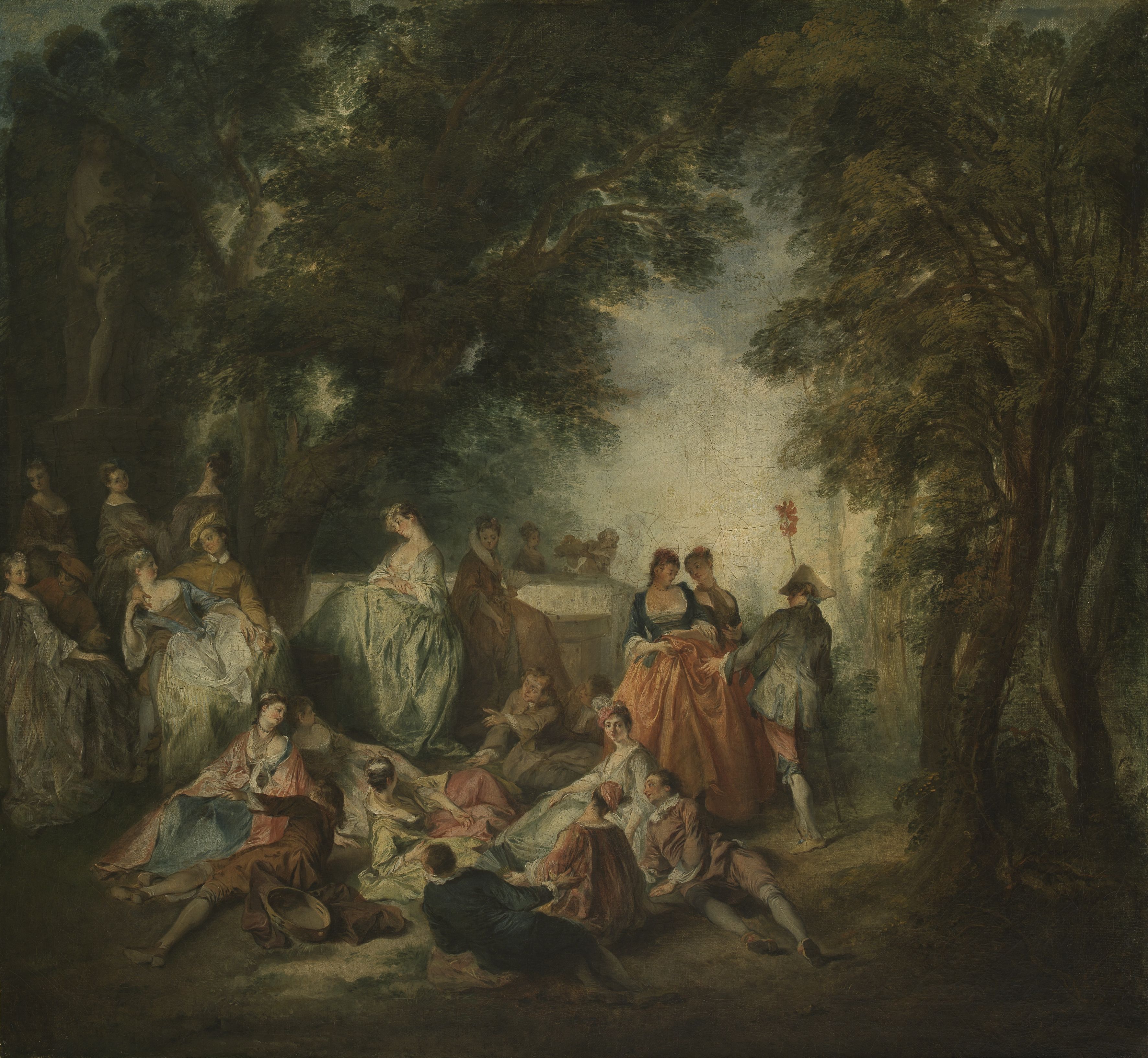
- France, c. 1730
- Oil on canvas
- Inv. 958
Fête Galante
This painting was part of the collection of Frederick the Great, King of Prussia (1740–1786), who was a great admirer of Lancret and had over twenty-six of his paintings. Probably executed in the early 1730s, this work has stylistic similarities with Dance between the Pavilion and the Fountain (1732) and Dance before a Tree (1730–5), both belonging to the Castle of Charlottenburg in Berlin. A study for the reclining male figure on the left of the composition, from the mid-1720s, can be seen at the Ackland Art Museum, North Carolina.
Introduced into France by Claude Gillot (1673–1722), Fête Galante, a generic designation which is also used as the title of the work, consists of a type of representation of refined outdoor scenes depicting elegant-looking people in a pleasant mundane gathering. The figures are arranged scenographically in the space, a result of the influence of theatre on this type of representation.
Frederick II, King of Prussia; Imperial German Family; Neues Palais, Potsdam, 1923. Acquired by Calouste Gulbenkian through Hans Stiebel, Berlin, 9 January 1930.
H. 64.5 cm; W. 69.5 cm
Wildenstein 1924
Georges Wildenstein, Lancret. Paris: 1924, p. 93, no. 333.
Washington D. C. 1950
European Paintings from the Gulbenkian Collection, exhibition catalogue. Washington D. C.: National Gallery of Art, 1950, pp. 50–1, cat. 20.
New York 1999
Katharine Baetjer and James David Draper (eds.), 'Only the Best'. Masterpieces of the Calouste Gulbenkian Museum, Lisbon, exhibition catalogue. New York: The Metropolitan Museum of Art, 1999, pp. 90–1, cat. 43.
Sampaio 2009
Luísa Sampaio, Painting in the Calouste Gulbenkian Museum. Lisbon: Calouste Gulbenkian Museum, 2009, pp. 74–5, cat. 27.